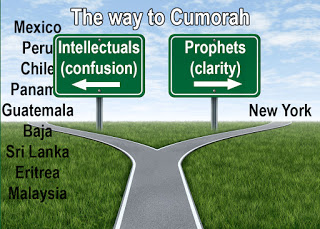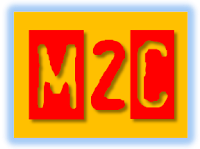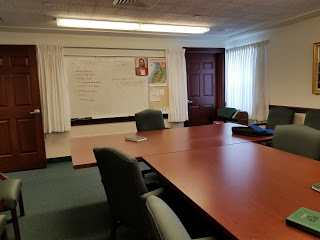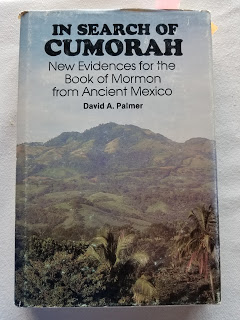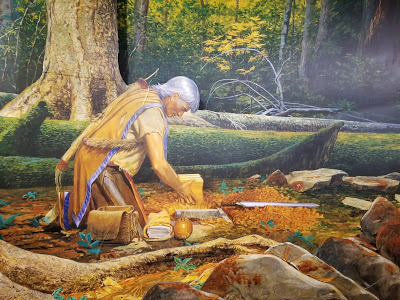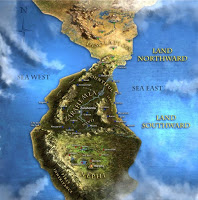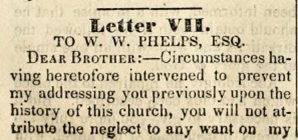 |
| Letter VII from Messenger and Advocate, July 1835 |
Those who reject Letter VII cite no reasons other than their preference for a different location for the Hill Cumorah.
It is interesting to take a look at Oliver Cowdery’s participation in the Church to put Letter VII in context. When he wrote it, he was the Assistant President of the Church. He had been commanded by revelation to select materials to publish. All eight of Oliver’s letters about history are accepted by Church historians as important insights into the early events of the Church.
The only ones who object to any of Oliver’s writings are the Mesoamerican advocates who reject just a few paragraphs out of one of the eight letters.
Oliver published Letter VII in July 1835. In February 1835, he, as one of the Three Witnesses, had selected the first members of the Quorum of the Twelve Apostles. He gave them their aspostolic charge. In April 1836, he, along with Joseph Smith, was visited in the Kirtland temple by Moses, Elias, Elijah, and the Savior Himself. Oliver and Joseph were given the keys of the gathering of Israel and the dispensation of the gospel of Abraham.
Mesoamerican advocates expect you to believe that Oliver Cowdery could faithfully record the entire Book of Mormon, most of the Book of Moses, and much of Church history. Oliver could faithfully edit and publish two Church newspapers, the Book of Commandments, and the original Doctrine and Covenants. He could accurately write the statement for the Three Witnesses. Of all the writing he did, you’re supposed to believe he was faithful and accurate except for a few paragraphs in one letter, solely because those paragraphs contradict the opinions of the scholars.
Here is the chronology. Everything that is okay is marked green. The items the scholars object to is marked red.
|
Date
|
Event
|
|
|
1829 April
|
Transcribes Book of Mormon as Joseph dictates
|
|
|
1829 May
|
Receives Aaronic Priesthood from John the Baptist, baptizes Joseph and is baptized by him
|
|
|
1829 May
|
Receives Melchizedek Priesthood from Peter, James and John
|
|
|
1829 June
|
Sees the plates and angel as one of the Three Witnesses
|
|
|
1829 June
|
Completes Book of Mormon and makes a printer’s copy, supervises printing and publication
|
|
|
1830 April
|
Helps organize the Church as a Second Elder and apostle, ordains Joseph Smith as First Elder
|
|
|
1830 June
|
Transcribes Book of Moses 1:1 through 5:43
|
|
|
1830 Oct.
|
Leaves on mission to the Lamanites
|
|
|
1830 Nov.
|
Baptizes Sidney Rigdon
|
|
|
1831 Jan.
|
Arrives in Jackson County, Mo.
|
|
|
1831 Summer
|
Meets Joseph in Jackson County
|
|
|
1831 Nov.
|
Takes revelations from Ohio to Missouri for publication
|
|
|
1832
|
Helps Phelps with printing operation in Missouri
|
|
|
1832 Apr.
|
Approves Book of Commandments
|
|
|
1833 Nov.
|
Sets up printing press in Kirtland, reprints Evening and Morning Star
|
|
|
1833 Dec.
|
Begins editing Evening and Morning Star
|
|
|
1834 Feb.
|
Chosen as founding member of Kirtland Council
|
|
|
1834 May-Aug.
|
Leader in Kirtland after Zions Camp left
|
|
|
1834 Oct
|
Edits LDS Messenger and Advocate and Northern Times
|
|
|
1834 Oct
|
Publishes Letter I about Church history, part of which is in the current Pearl of Great Price
|
|
|
1834 Nov
|
Publishes Letter II about Church history
|
|
|
1834 Dec
|
Publishes Letter III about Church history
|
|
|
1834 Dec
|
Ordained by Joseph Smith as “Assistant President of the Church”
|
|
|
1835
|
Publishes Letter IV about Church history
|
|
|
1835 Feb
|
With David Whitmer and Martin Harris, selects first members of the Quorum of the Twelve Apostles
|
|
|
1835 Feb
|
Gives apostolic charge to the Twelve Apostles
|
|
|
1835 Mar
|
Publishes Letter V about Church history
|
|
|
1835 Apr
|
Publishes Letter VI about Church history
|
|
|
1835 May
|
Resigns from Messenger and Advocate
|
|
|
1835 July
|
Publishes Letter VII about Church history
|
|
|
1835 Aug.
|
Gets Doctrine and Covenants approved for printing
|
|
|
1835 Oct.
|
Publishes Letter VIII about Church history
|
|
|
1836 Mar.
|
Resumes editing the Messenger and Advocate
|
|
|
1836 Apr.
|
Visited in Kirtland temple by Moses, Elias, Elijah, and Christ, receives the keys of the gathering of Israel and dispensation of gospel of Abraham
|
|
|
1836 July
|
Accompanies Joseph to Salem, MA
|
|
|
1837 Feb.
|
Turns over printing company to Joseph and Sidney
|
|
|
1838 July
|
“Excluded from fellowship” for accusations against Joseph
|
|
|
1848 Nov.
|
Rebaptized into the Church
|
|
|
1850 March
|
Dies in Richmond at home of David Whitmer
|
